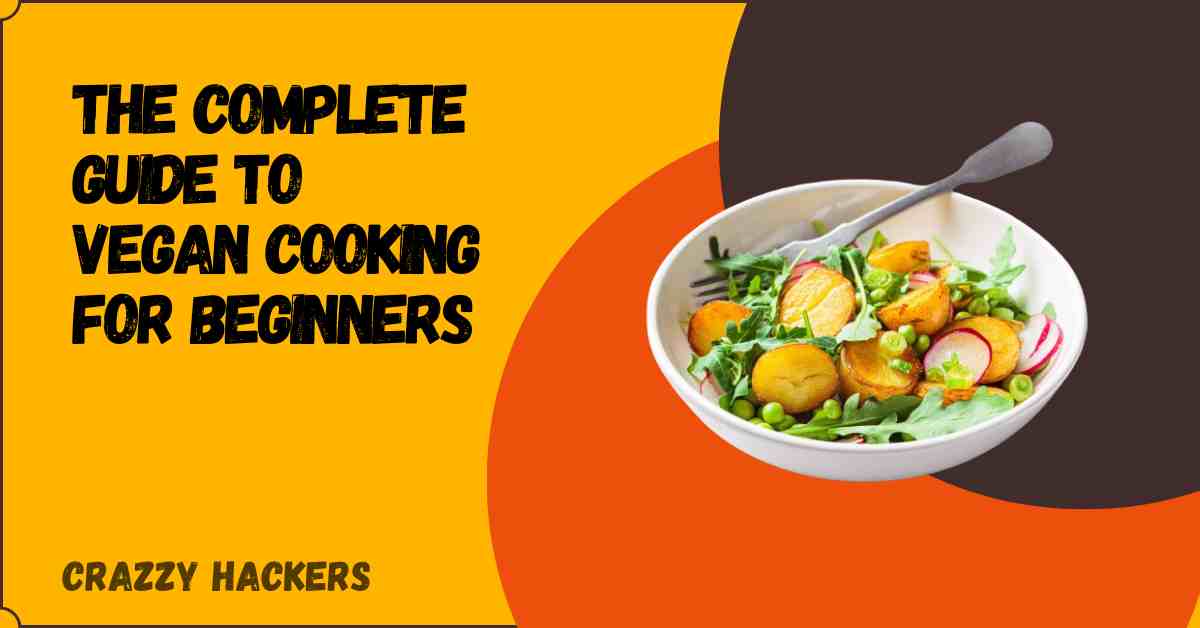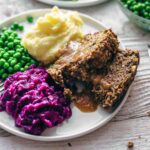Embark on a culinary journey into the vibrant world of vegan cooking! This comprehensive guide unveils the secrets to crafting delicious and nutritious plant-based meals, from mastering essential techniques to building a well-stocked vegan pantry. Discover the art of effortless ingredient substitutions, transforming familiar dishes into exciting vegan creations. Prepare to be amazed by stunning starter and main course recipes, each meticulously detailed with step-by-step instructions and mouthwatering descriptions. Even the challenges of vegan baking are conquered, with expert tips and foolproof recipes that will delight your taste buds.
Dive into a treasure trove of knowledge, encompassing fundamental techniques like sautéing, roasting, and steaming, alongside clever tips for achieving perfect textures and flavors. Explore a curated list of essential pantry staples, their versatility, and how to incorporate them into a balanced weekly meal plan. Learn to confidently substitute common non-vegan ingredients, maintaining both taste and texture in your culinary masterpieces. Finally, indulge in a collection of delectable vegan recipes, from elegant starters to satisfying main courses and irresistible baked goods. This guide is your passport to a world of flavor and creativity in the plant-based kitchen.
Essential Vegan Cooking Techniques
Mastering a few fundamental techniques unlocks a world of delicious and diverse vegan cuisine. This section explores essential methods, offering tips and tricks to elevate your vegan cooking to the next level, transforming simple ingredients into flavorful and satisfying meals. We will cover sautéing, roasting, and steaming, highlighting substitutions for common animal-based ingredients and emphasizing the importance of proper knife skills.
Sautéing
Sautéing, a quick and versatile technique, involves cooking food in a small amount of hot oil or fat over medium-high heat. The rapid cooking process preserves the food’s texture and enhances its natural flavors. For vegan sautéing, consider using olive oil, avocado oil, or coconut oil. A well-seasoned cast-iron skillet is ideal for even heat distribution.
To sauté vegetables like bell peppers and onions for a vibrant vegan stir-fry, toss them in a hot pan with a drizzle of olive oil until they soften and slightly caramelize. The high heat creates a beautiful sear, concentrating the sweetness of the vegetables. For a more complex example, consider a vegan mushroom and tofu stir-fry, where the tofu is first pressed to remove excess water before being added to the pan to ensure a crispy exterior. The mushrooms, sautéed until tender, contribute an earthy depth of flavor. Remember to avoid overcrowding the pan; work in batches to maintain consistent heat and prevent steaming.
Roasting
Roasting, a dry-heat cooking method, involves cooking food in an oven at high temperatures. It’s perfect for bringing out the natural sweetness and creating a crispy exterior on vegetables and tofu. Roasting also works beautifully with root vegetables like carrots, potatoes, and sweet potatoes, allowing their natural sugars to caramelize, resulting in a delightful sweetness and tender texture. Experiment with herbs and spices to enhance the flavor profiles. For example, roasting Brussels sprouts with balsamic glaze and maple syrup creates a sweet and tangy dish. Similarly, a simple toss of cubed tofu with olive oil, paprika, and garlic powder before roasting will result in a crispy, flavorful protein source for salads or bowls.
Steaming
Steaming is a gentle cooking method that uses the steam from boiling water to cook food. It’s a healthy way to preserve nutrients and maintain the vibrant color and texture of vegetables. Steaming is particularly well-suited for delicate vegetables like asparagus, broccoli, and green beans, preventing them from becoming mushy. A steamer basket placed over a pot of boiling water is a simple and effective tool for steaming. To enhance the flavor of steamed vegetables, consider adding herbs, spices, or a squeeze of lemon juice after cooking. Steamed vegetables can be incorporated into many dishes, from simple side dishes to more elaborate vegan curries and noodle bowls.
Essential Knife Skills in Vegan Cooking
Proper knife skills are paramount in vegan cooking, allowing for consistent chopping, dicing, and mincing, resulting in even cooking and improved presentation. A sharp knife is crucial for safety and efficiency.
| Technique | Description | Example | Tip |
|---|---|---|---|
| Dicing | Cutting food into small, uniform cubes. | Diced onions for a vegan chili. | Use a rocking motion to create consistent cubes. |
| Mincing | Finely chopping food into very small pieces. | Minced garlic for a pasta sauce. | Use a sharp knife and a quick, chopping motion. |
| Slicing | Cutting food into thin, even slices. | Sliced mushrooms for a vegan stir-fry. | Keep your knife at a consistent angle. |
| Chopping | Cutting food into smaller, irregular pieces. | Chopped vegetables for a vegan curry. | Work in a controlled manner, keeping your fingers curled. |
Building a Vegan Pantry

A well-stocked vegan pantry is the cornerstone of delicious and convenient plant-based cooking. It’s a vibrant collection of ingredients, ready to be transformed into nourishing and flavorful meals, minimizing reliance on last-minute grocery runs and maximizing your culinary creativity. Building a versatile pantry involves selecting staple ingredients with long shelf lives and diverse applications, allowing for spontaneous meal creation and minimizing food waste.
Essential Vegan Pantry Staples
A thoughtfully curated vegan pantry provides the building blocks for countless meals. The following categories and items represent a solid foundation, ensuring you’re always prepared for culinary adventures. Proper storage is crucial for maintaining freshness and maximizing shelf life.
- Grains: Brown rice (store in an airtight container in a cool, dark place for up to 6 months), quinoa (similar storage to rice, shelf life of about 1 year), oats (rolled oats can last up to a year in an airtight container; quick-cooking oats have a slightly shorter shelf life), whole wheat pasta (store in a cool, dry place in its original packaging for up to a year). These provide the base for many dishes, from hearty bowls to satisfying pasta meals.
- Legumes: Dried lentils (red, green, brown; store in an airtight container in a cool, dark place for up to a year), chickpeas (similar storage to lentils), black beans (similar storage to lentils), kidney beans (similar storage to lentils). These are excellent sources of protein and fiber, adding heartiness and texture to soups, stews, salads, and dips.
- Nuts & Seeds: Almonds (store in an airtight container in the refrigerator for up to 6 months to maintain freshness and prevent rancidity), chia seeds (store in an airtight container in a cool, dark place for up to a year), flax seeds (similar storage to chia seeds), sunflower seeds (store in an airtight container in the refrigerator for optimal freshness). These add healthy fats, protein, and crunch to various dishes.
- Spices & Seasonings: Cumin, turmeric, smoked paprika, garlic powder, onion powder, chili powder, oregano, basil. Store spices in airtight containers in a cool, dark place to preserve their flavor and aroma for up to a year. These add depth and complexity to any dish, transforming simple ingredients into culinary masterpieces.
- Other Essentials: Nutritional yeast (adds a cheesy flavor, store in an airtight container in a cool, dark place for up to a year), vegetable broth (store unopened in a cool, dark place for up to a year; once opened, refrigerate and use within a week), canned diced tomatoes (store unopened in a cool, dark place for up to 18 months; once opened, refrigerate and use within a week), coconut milk (refrigerate after opening and use within a week), olive oil (store in a cool, dark place away from direct sunlight and heat for up to two years). These versatile ingredients add flavor and richness to countless recipes.
Versatility of Vegan Pantry Staples
The beauty of these staples lies in their versatility. For instance, chickpeas can be roasted for a crunchy snack, mashed into hummus, or simmered into a flavorful curry. Brown rice can be the foundation of a hearty bowl, a side dish, or even a delicious pudding. Oats can be transformed into porridge, baked into cookies, or used as a binder in veggie burgers. The possibilities are truly endless.
Sample Weekly Vegan Pantry Meal Plan
This plan showcases the versatility of common vegan pantry staples.
| Day | Meal | Ingredients |
|---|---|---|
| Monday | Lentil Soup | Brown lentils, carrots, celery, onion, vegetable broth, cumin, turmeric |
| Tuesday | Chickpea Curry | Chickpeas, diced tomatoes, onion, garlic powder, coconut milk, curry powder, brown rice |
| Wednesday | Quinoa Salad | Quinoa, black beans, corn (canned), red onion, cilantro, lime juice, olive oil |
| Thursday | Pasta with Roasted Vegetables | Whole wheat pasta, zucchini, bell peppers, olive oil, garlic powder, oregano |
| Friday | Oatmeal with Berries and Nuts | Oats, almond milk, berries (frozen), almonds, chia seeds |
| Saturday | Black Bean Burgers | Black beans, breadcrumbs (can be made from oats), onion, garlic powder, chili powder, whole wheat buns |
| Sunday | Lentil Shepherd’s Pie | Brown lentils, carrots, celery, onion, vegetable broth, mashed sweet potatoes (canned or baked) |
Mastering Vegan Substitutions
Embarking on a vegan culinary journey often involves mastering the art of substitution. This section delves into the diverse world of vegan alternatives, exploring their unique properties and guiding you through seamless ingredient swaps to create delicious and satisfying vegan versions of your favorite dishes. Understanding these substitutions will unlock a universe of creative culinary possibilities.
Vegan Egg Replacements
Many vegan bakers and cooks rely on clever substitutes to mimic the binding, leavening, and emulsifying properties of eggs. Flaxseed “eggs,” made by combining one tablespoon of ground flaxseed meal with three tablespoons of water, create a gel-like consistency ideal for binding baked goods. Chia seeds offer a similar functionality, requiring the same ratio of chia seeds to water. Applesauce, mashed bananas, and silken tofu all contribute moisture and binding, while baking powder can often compensate for the leavening action of eggs. The choice of substitute often depends on the specific recipe and desired outcome. For example, flax eggs work well in cookies, while applesauce might be preferred in muffins for its added sweetness and moisture. Silken tofu, due to its neutral flavor and creamy texture, is a superb choice for vegan mayonnaise or quiches.
Vegan Milk Alternatives
The world of plant-based milks is vast and varied, each offering a unique flavor profile and nutritional content. Soy milk, a long-standing favorite, provides a creamy texture and high protein content. Almond milk, known for its mild and slightly nutty taste, is a popular choice, while oat milk boasts a naturally creamy texture and a slightly sweet flavor. Coconut milk, with its rich and distinctly tropical flavor, is best suited for certain dishes, particularly curries and desserts. Each milk alternative behaves differently in recipes. Soy milk often works well in savory dishes, while almond or oat milk might be preferred in coffee or smoothies. Coconut milk’s richness lends itself beautifully to creamy sauces and soups. Consider the fat content and sweetness when selecting a milk alternative for optimal results. For instance, full-fat coconut milk will yield a richer curry than light coconut milk.
Vegan Butter Substitutes
Vegan butter, often made from coconut oil, palm oil, or other plant-based fats, offers a close approximation to the taste and texture of traditional butter. However, other options exist depending on the application. For baking, applesauce or mashed bananas can add moisture and richness, although the final product might have a slightly different flavor profile. Olive oil or melted coconut oil can be substituted in some recipes, offering a distinct flavor that might complement certain dishes. The choice depends on the recipe’s requirements; vegan butter generally provides the most consistent results in baking, while oils might be better suited for sautéing or frying. For example, substituting olive oil for butter in a cake might alter the texture and flavor significantly, whereas using vegan butter will maintain a more similar result.
Adapting Recipes for Vegan Cooking: A Case Study – Vegan Chocolate Chip Cookies
Let’s illustrate the substitution process with a classic: chocolate chip cookies. A traditional recipe often calls for eggs, butter, and milk. To create a vegan version, we replace the eggs with flax eggs (or mashed banana for added moisture), butter with vegan butter, and milk with plant-based milk (almond or soy milk work well). The resulting cookies will maintain the familiar texture and chewy consistency, with a subtle difference in flavor due to the unique properties of the vegan substitutes. The overall flavor profile remains remarkably similar to the original, demonstrating the versatility of vegan substitutions. The key is understanding the role each ingredient plays and selecting an appropriate replacement that mimics its function.
From the fundamentals of vegan cooking techniques to the delightful artistry of vegan baking, this ultimate guide has equipped you with the knowledge and inspiration to confidently create a wide array of delicious and satisfying plant-based meals. Mastering ingredient substitutions and building a versatile pantry will unlock a world of culinary possibilities, transforming your kitchen into a hub of creative vegan cuisine. Embrace the journey, experiment with flavors, and savor the joy of creating healthy and flavorful vegan dishes that will impress even the most discerning palates. The possibilities are endless; the deliciousness is guaranteed.
Key Questions Answered
What equipment is essential for vegan cooking?
Basic kitchen tools like knives, cutting boards, pots, pans, and baking sheets are essential. A good blender or food processor is also helpful for making sauces and vegan alternatives.
Are vegan meals more expensive than non-vegan meals?
The cost can vary. While some specialty vegan products might be pricier, many staple ingredients like beans, lentils, and rice are very affordable, making it possible to eat vegan on a budget.
How do I ensure I’m getting enough protein on a vegan diet?
Legumes, tofu, tempeh, seitan, nuts, seeds, and quinoa are excellent sources of plant-based protein. A varied diet ensures you meet your protein needs.
Can I adapt existing recipes to be vegan?
Absolutely! Many recipes can be easily veganized by substituting common ingredients like eggs, milk, and butter with their vegan counterparts. This guide provides detailed guidance on making such substitutions.


